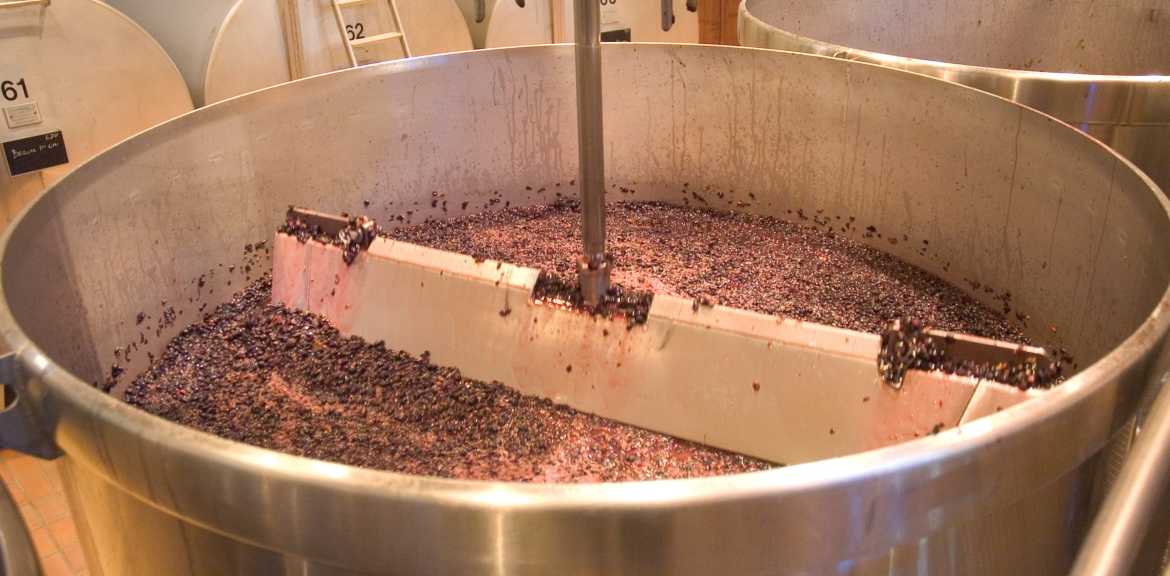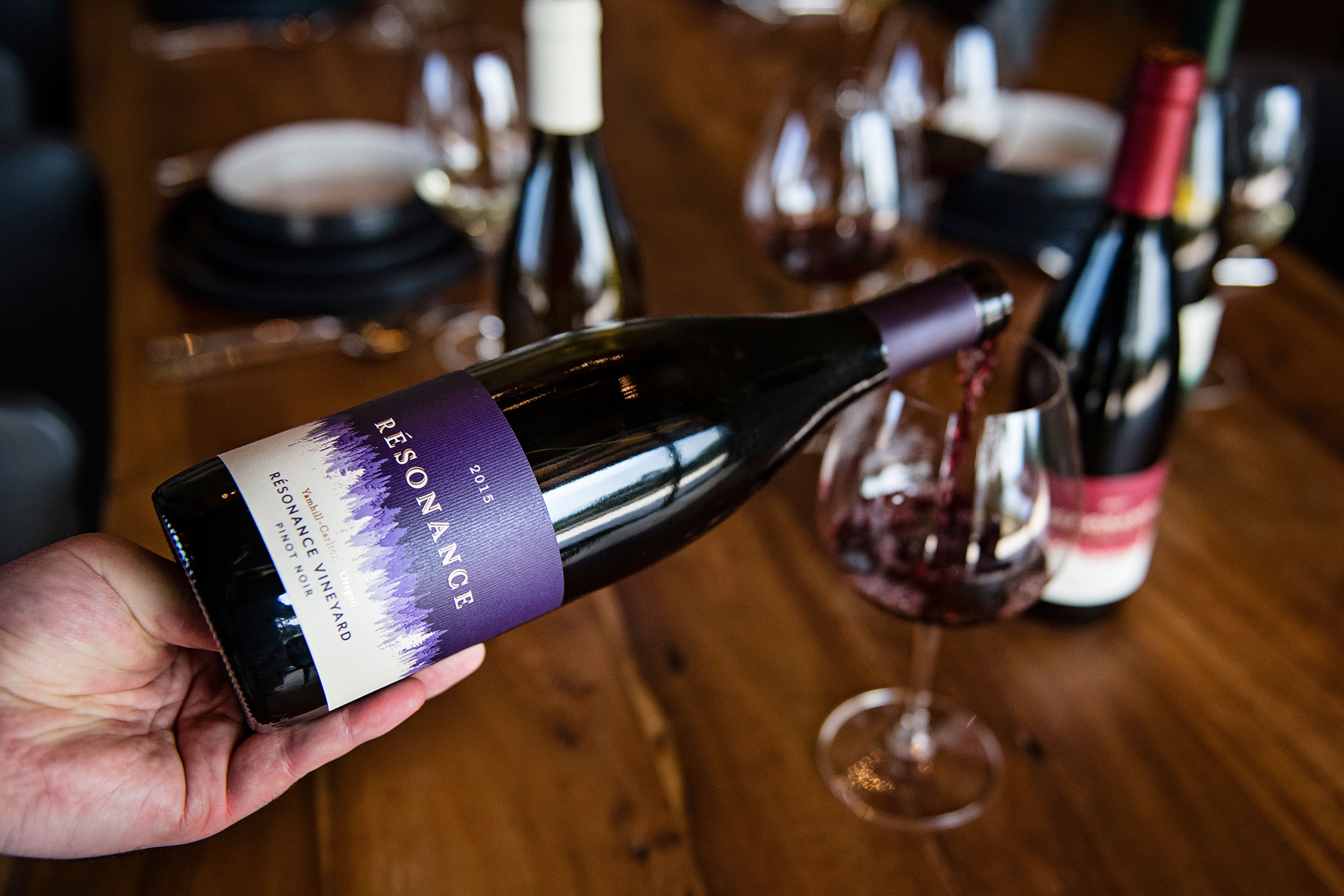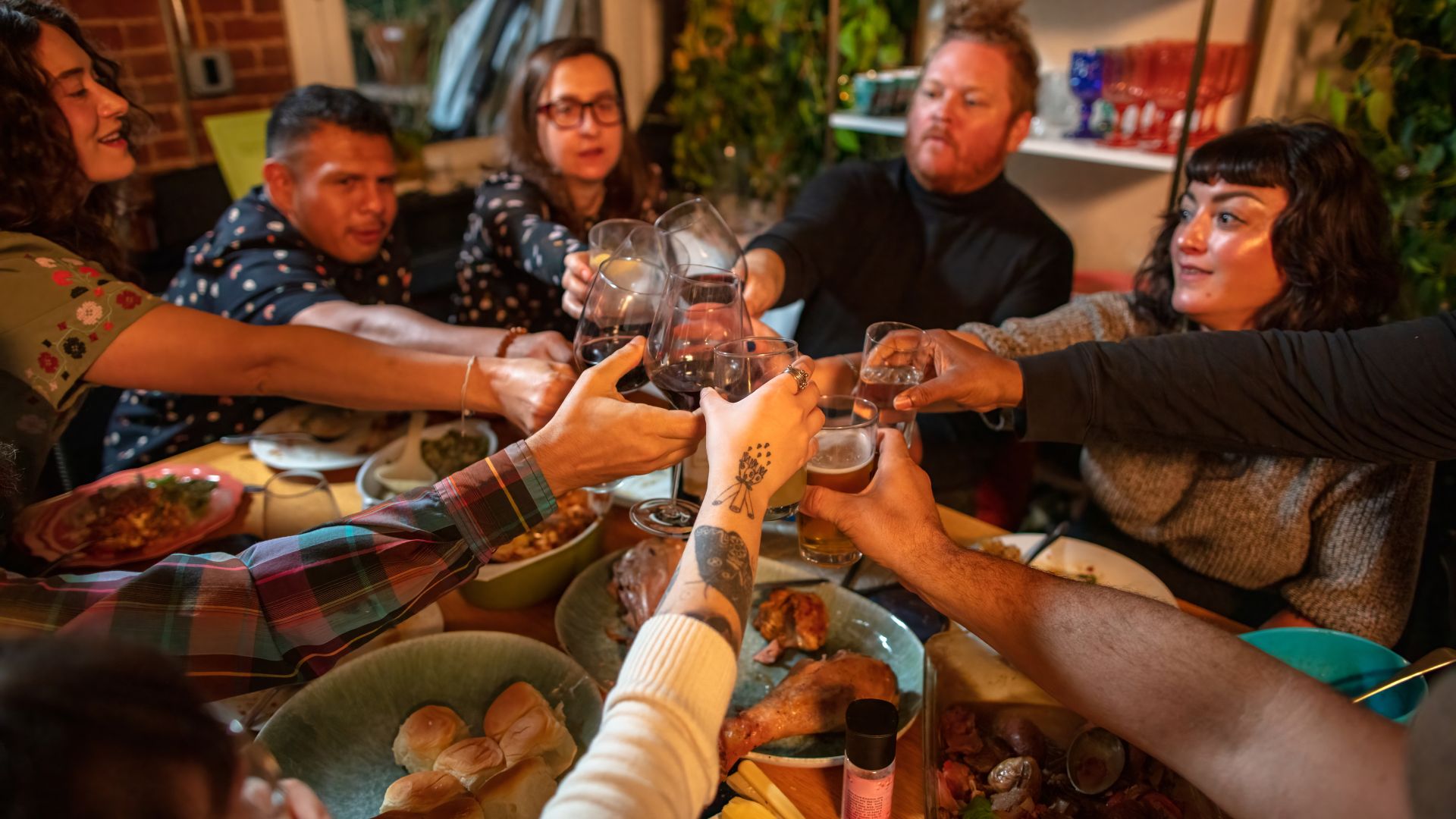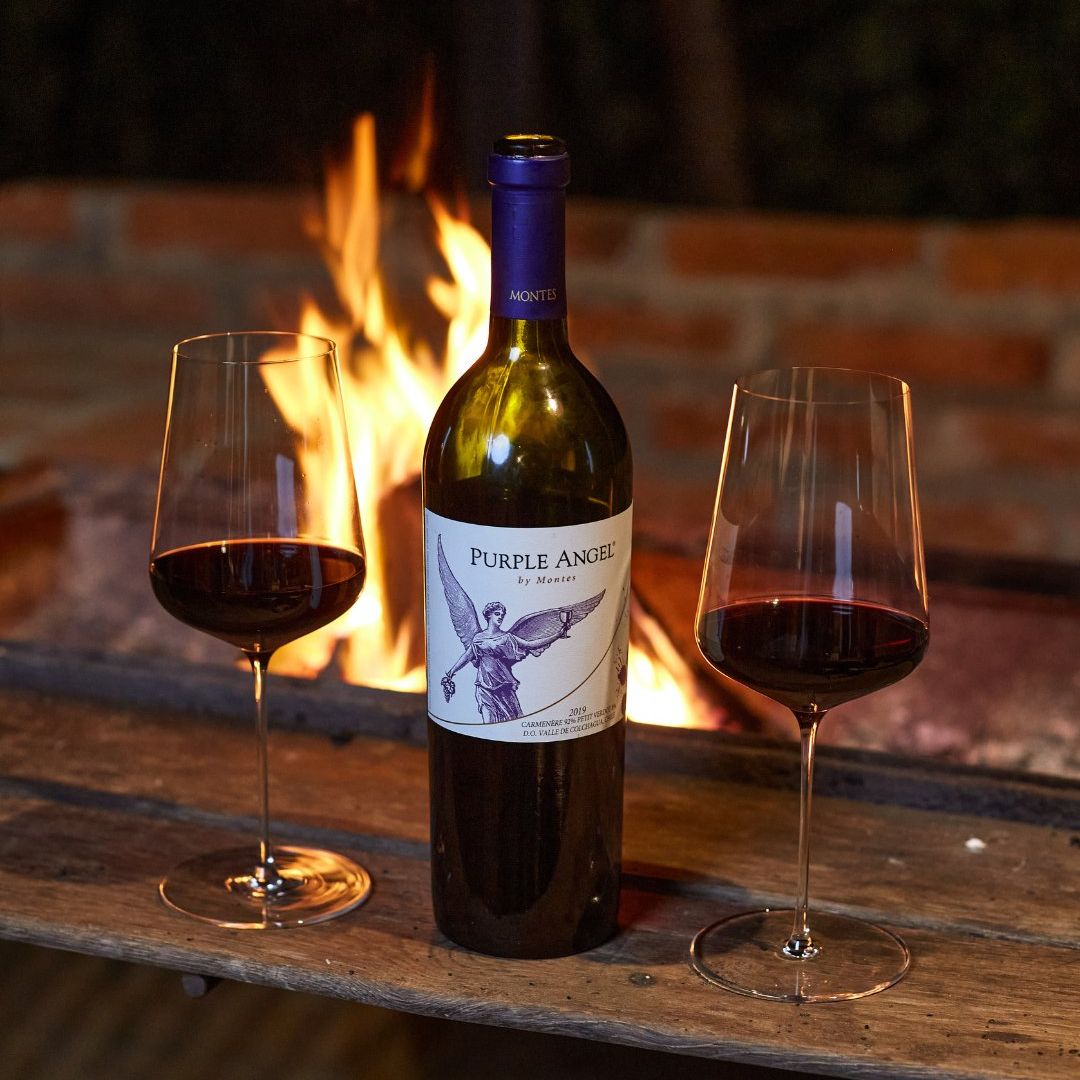Here’s a basic rundown of how red wine is made. We will make it short and sweet.
How Red Wine Is Made
Grapes are picked and pressed with or without the stems (this is up to the winemaker; stems can add tannin and depth of flavor) and the must (grape skins and juice) often goes through alcoholic fermentation in stainless steel or concrete tanks. This gives the winemaker more control over the temperature of alcoholic fermentation and is easier to clean than a barrel, although doing this in a barrel isn’t unheard of.
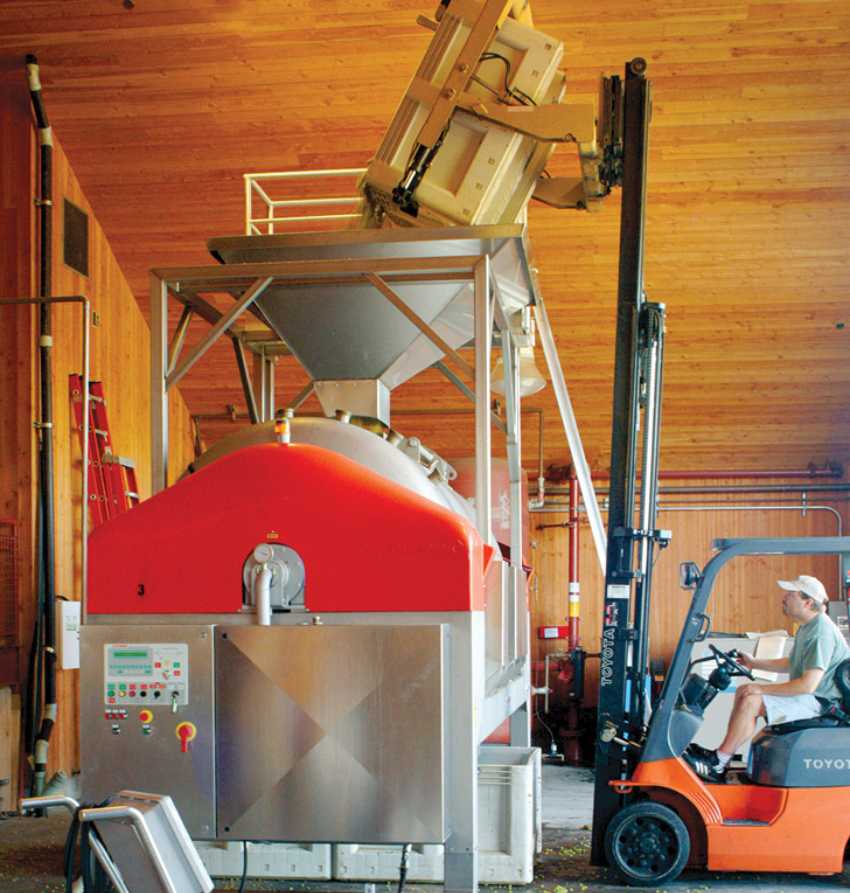
From here, the winemaker can choose whether to add cultured yeasts or let the wine begin fermentation with ambient yeast in the air. Adding cultured yeasts gives the winemaker more control over the speed of fermentation and, just as importantly, affects the flavor of the wine. Ambient or natural yeasts are more unpredictable, but can add certain character and complexity to the wine that the winemaker might prefer.
Alcoholic fermentation starts. This is where yeast converts the sugar in the juice into alcohol, giving off heat and carbon dioxide.
Red wine gets its color from the skins of the grapes. The juice itself does not have color, minus a couple exceptions. This color is further drawn out by heat and alcohol during fermentation.
The skins of the must rise to the top of the tank, creating a “cap” which is pushed back, not only extracting more color, but tannin and flavor as well.
When the sugar has converted to alcohol, the yeast dies and alcoholic fermentation is complete. Winemakers can choose to let the wine rest with the skins for a period of time to get any final flavors out before separating and aging the liquid (usually in barrels). This is the post-fermentation soak.
Aging will permit oxygen contact that rounds out the texture (mouthfeel), flavor, and maturity of a wine. Most parts of the world have aging requirements (for quality control and classification) before allowing a wine to be bottled and sold.
Aging is also important because it gives sediment and dead yeast cells time to sink to the bottom of the barrel. The clearer wine at the top can then be transferred to a new barrel (this is called racking) for further aging.
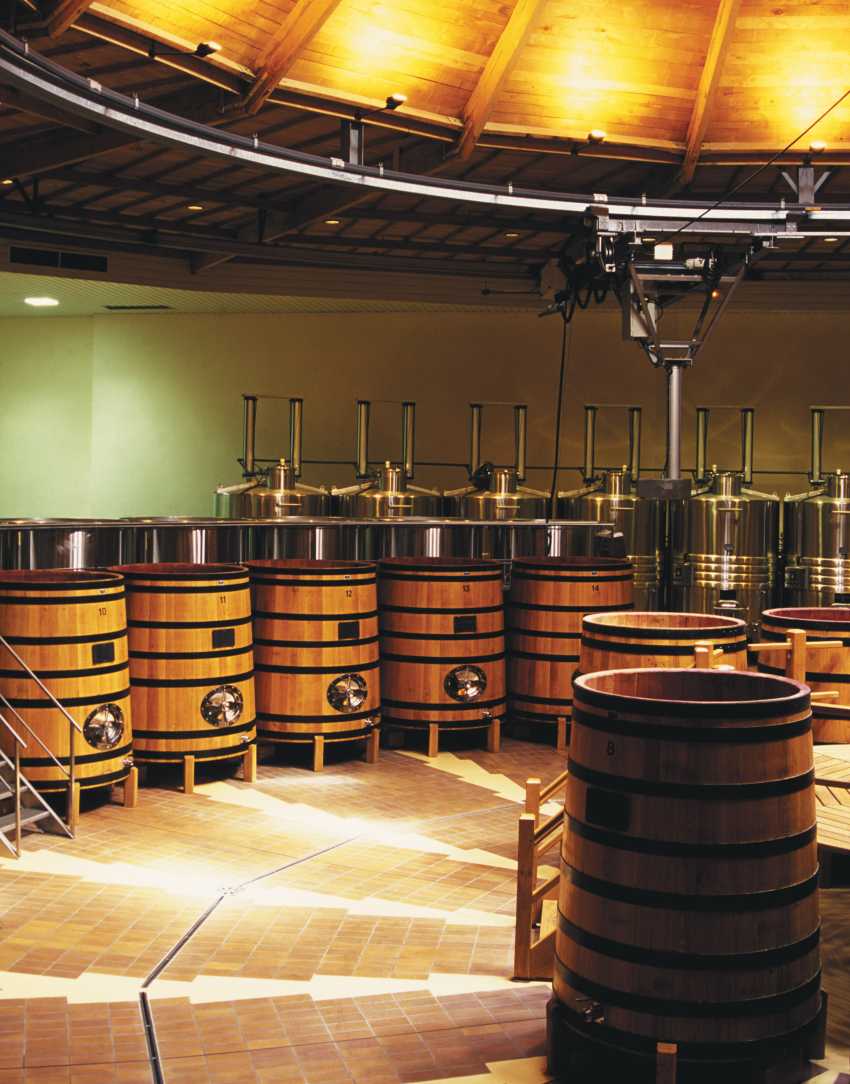
This stabilizes a red wine and helps age it by exposing it to oxygen. Some producers do this multiple times; others don’t do it at all.
Another decision! To filter or not to filter. Filtering removes extra particles people may not want to see in their wine, but if it is filtered too finely, flavor could be lost. I don’t personally mind if there are some particles, but if I have to worry about it sticking in my teeth, I’m not super excited.
Bottling. Some countries/wine styles have requirements for aging in the bottle as well (ex: Champagne, Chianti Classico). This final step is where a winemaker decides on the type of closure they’d like… whether it’s cork, screwcap, or synthetic cork.
Those are the basics…Of course there are exceptions, different processes, different requirements, etc.…Remember, we are just here for basics.
Hopefully this was helpful!
